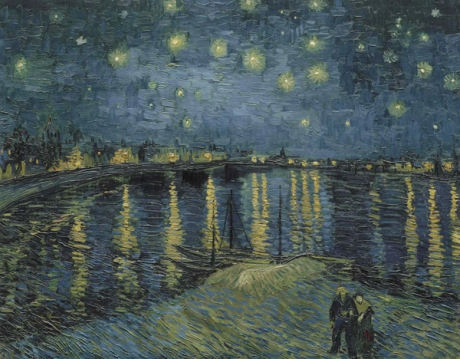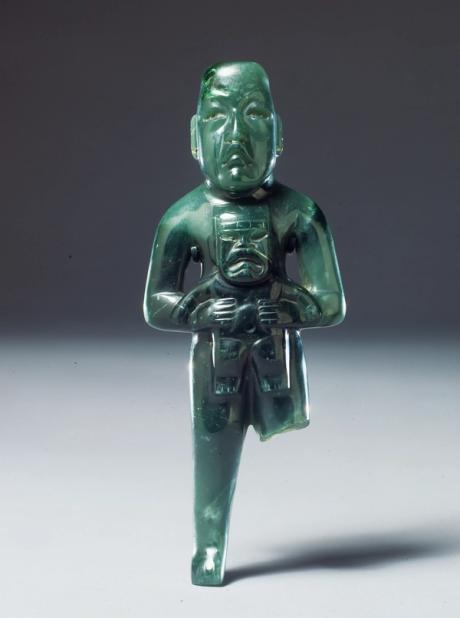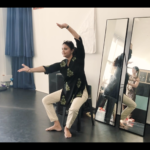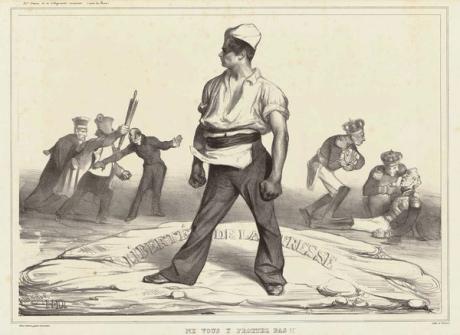Chu’u Mayaa
2017 - Film & Video (Film & Video)
17:57 minutes
Clarissa Tossin
Clarissa Tossin’s film Ch’u Mayaa responds to Frank Lloyd Wright’s Hollyhock House (constructed 1919–21) in Los Angeles, an example of Mayan Revival architecture. By re-appropriating the structure as a temple and imbuing it with a dance performance based on movements and postures found in ancient pottery and murals, the choreography takes its influence from the house’s design and the body positions on ancient Maya ceramics and buildings. A pulse, breathing, and a pre-Columbian clay flute are among the sounds on the soundtrack. Tossin mimics how the Maya civilization might have used a temple or ceremonial structure by employing Hollyhock House as a stage. The home is re-signified as belonging to the Pre-Columbian Mesoamerican architecture lineage by the movement of a female dancer. The title, which translates as Maya Blue , refers to the ancient azure color seen on Mayan ceramics and paintings portraying dancers, which is widely renowned for its weather resistance and ability to withstand the passage of time.
Clarissa Tossin’s photographs, videos, and installations are active investigations into the workings of urban planning and labor politics. The artist draws poignant parallels among historical events, creating engaging narratives that are also often subversive. Many of her works are concerned with what could be called a topography of place. Focusing on the promises, legacies, and failings of modernity, globalism, and utopian idealism, much of her work concentrates on cultural and economic connections between the United States and Latin American countries. Tossin’s most recent artwork, Archaeology of the Present, investigates the link between Indigenous civilizations and current Los Angeles via the lenses of gender and appropriation.
Colors:
Related works featuring themes of: » Contemporary Conceptualism, » Installation Art, » Brazil, » Globalization, » Color Photography, » Cross-Cultural Dialogue, » Brazilian
» see more

© » KADIST
Runo Lagomarsino
2020On Fire by Runo Lagomarsino comprises twenty pieces of parchment, each of which has had the contours and map of Brazil burned in stages...

© » KADIST
Runo Lagomarsino
2020Yo también soy humo (I am also smoke) is a 16mm film that has been digitized to video...

© » KADIST
Yee I-Lann
20207-headed Lalandau Hat by Yee I-Lann is an intricately woven sculpture evoking the ceremonial headdress worn by Murut men in Borneo...
Other related works, blended automatically
» see more

© » KADIST
Clarissa Tossin
2012In Fordlândia Fieldwork (2012), Tossin documents the remains of Henry Ford’s rubber enterprise Fordlândia, built in 1928 in the Brazilian Amazon to export cultivated rubber for the booming automobile industry...

© » KADIST
Runo Lagomarsino
2020On Fire by Runo Lagomarsino comprises twenty pieces of parchment, each of which has had the contours and map of Brazil burned in stages...

© » KADIST
Runo Lagomarsino
2020Yo también soy humo (I am also smoke) is a 16mm film that has been digitized to video...

© » KADIST
Yee I-Lann
20207-headed Lalandau Hat by Yee I-Lann is an intricately woven sculpture evoking the ceremonial headdress worn by Murut men in Borneo...
Related works sharing similar palette
» see more

© » THEARTNEWSPER
Van Gogh’s 'Starry Night over the Rhône' will return for the first time to the city where it was painted Art market Museums & heritage Exhibitions Books Podcasts Columns Technology Adventures with Van Gogh Search Search Adventures with Van Gogh blog Van Gogh’s 'Starry Night over the Rhône' will return for the first time to the city where it was painted But did Vincent really wear a hat fringed with candles when he was working? Martin Bailey 8 December 2023 Share Van Gogh’s Starry Night over the Rhone (September 1888) Credit: Musée d’Orsay, Paris Adventures with Van Gogh Adventures with Van Gogh is a weekly blog by Martin Bailey, our long-standing correspondent and expert on the artist...

© » KADIST
Carolina Caycedo
2013In this two-channel video installation, Spaniards Named Her Magdalena, But Natives Called Her Yuma , Carolina Caycedo gathered footage during numerous research trips to dam sites in the Harz Mountains, Saxony, Westphalia and the Black Forest in Germany interspersed with images of the Rio Magdalena region in Colombia...

© » HYPERALLERGIC
Citing Silencing of Arab Voices, Artists Cut Ties With Art Canada Institute Skip to content Rana Nazzal Hamadeh, "Untitled" (2020), color digital photograph, inkjet on vinyl, 60 inches x 120 inches (image courtesy of the artist) A number of artists and curators have said they are cutting ties with Art Canada Institute (ACI) after the arts nonprofit was accused late last month of attempting to suppress the voices of a group of Arab and Muslim artists...
Related works from the » 2010's created around » Los Angeles, California
» see more

© » KADIST
Will Rogan
2010MUM , the acronym used to title a series of Rogan’s small interventions on found magazines, stands for “Magic Unity Might,” the name of a vintage trade magic publication...

© » KADIST
Phillip Maisel
2015While his works can function as abstract, they are very much rooted in physicality and the possibilities that are inherent in the materials themselves...

© » KADIST
Will Rogan
2014Will Rogan’s video Eraser (2014) shows a hearse parked in a clearing amidst leaf barren trees...

© » KADIST
Matt Lipps
2011In the series Horizons (2010), Lipps uses appropriation to riff on Modernism’s fascination with abstract form...
Other works by: » Clarissa Tossin
» see more

© » KADIST
Clarissa Tossin
2012In Fordlândia Fieldwork (2012), Tossin documents the remains of Henry Ford’s rubber enterprise Fordlândia, built in 1928 in the Brazilian Amazon to export cultivated rubber for the booming automobile industry...
Related artist(s) to: Clarissa Tossin » Johanna Calle, » Matthew Buckingham, » Minerva Cuevas, » Adriana Bustos, » Adriana Lara, » Agnes Denes, » Allan Sekula, » Amalia Pica, » Andrea Bowers, » Andrea Geyer
» see more

© » KADIST
Matthew Buckingham
2002Matthew Buckingham presents a narrative directly connected with a highly symbolic site in the United States, the Mount Rushmore Memorial*...

© » KADIST
Allan Sekula
1973San Pedro is a seaside city, part of the Los Angeles Harbor, sitting on the edge of a channel...

© » KADIST
Andrea Bowers
2015Bowers’ Radical Hospitality (2015) is a sculptural contradiction: its red and blue neon letters proclaim the words of the title, signaling openness and generosity, while the barbed wires that encircle the words give another message entirely...

© » KADIST
Amalia Pica
2013Memorial for intersections #2 (2013) is a minimalist, black metallic structure that contains the brightly colored translucent circles, triangles, rectangles, and squares that originally were presented in Pica’s performance work A ? B ? C (2013)...
Related works found in the same semantic group
» see more

© » THEARTNEWSPER
Kimbell Art Museum acquires important cultural touchstone of Olmec art Art market Museums & heritage Exhibitions Books Podcasts Columns Technology Adventures with Van Gogh Search Search Museums & Heritage news Kimbell Art Museum acquires important cultural touchstone of Olmec art The jade statuette of an Olmec ruler holding a baby were-jaguar will be exhibited as the centrepiece of the Texas museum's ancient American collection Theo Belci 14 December 2023 Share Standing Figure Holding a Were-Jaguar Baby (around 900BC-300BC) Photo: Justin Kerr., courtesy of the Justin Kerr Maya archive, Dumbarton Oaks, Trustees for Harvard University, Washington, DC The Kimbell Art Museum in Fort Worth, Texas, has acquired Standing Figure Holding a Were-Jaguar Baby (around 900BC-300BC), a jade statuette at the centre of Olmec civilisation studies since the mid-20th century...

© » ARTS EQUATOR
The working processes of artists: Kavitha Krishnan | ArtsEquator Thinking and Talking about Arts and Culture in Southeast Asia Articles June 8, 2020 Kavitha Krishnan, creative director and co-founder of Maya Dance Theatre, shares about her start in the traditional dance form Bharatanatyam, and how she also incorporates contemporary techniques and practices into the company’s work...

© » THEARTNEWSPER
Acquisitions round-up: the Städel Museum in Frankfurt shows off its Honoré Daumier bequest Art market Museums & heritage Exhibitions Books Podcasts Columns Technology Adventures with Van Gogh Search Search Museums & Heritage news Acquisitions round-up: the Städel Museum in Frankfurt shows off its Honoré Daumier bequest Plus, Olmec statuette becomes Kimbell Art Museum’s “most significant work of ancient American art” and Madrid’s Museo del Romanticismo buys an early Goya Hannah McGivern 9 February 2024 Share Honoré Daumier's Don't you dare! (1834) © Private Collection Daumier bequest from Hans-Jürgen Hellwig Städel Museum, Frankfurt The Städel Museum’s new show of 120 graphic works by Honoré Daumier (1808-79), running until 12 May, is drawn entirely from the collection of the Frankfurt arts patron Hans-Jürgen Hellwig...



